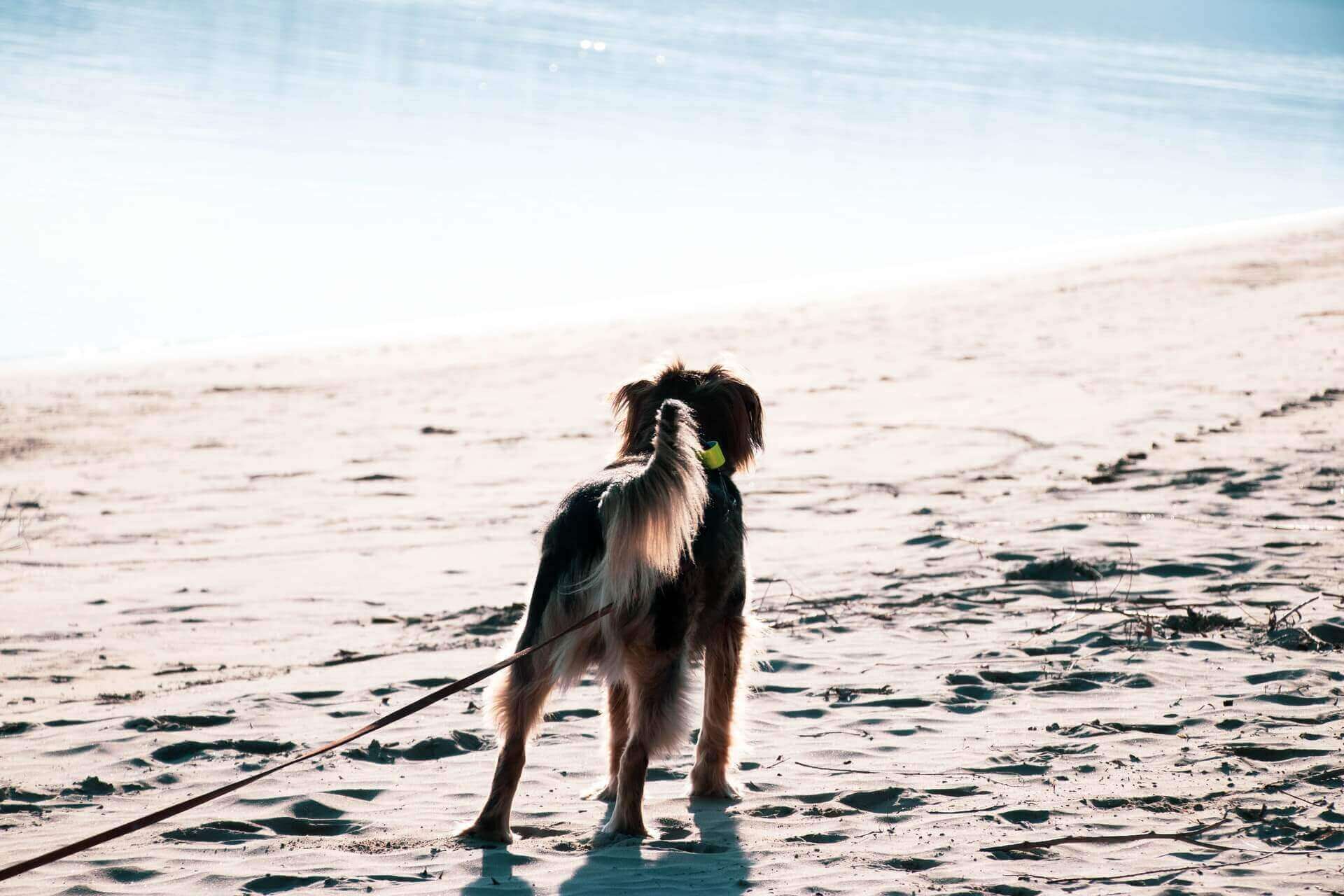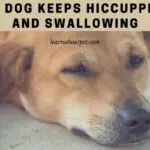If only your dog can talk or maybe they can? Well, they definitely can’t talk but dogs’ tails are like sign language but for dogs. Is your Dog tail up or down?
Dogs’ tail language is a way your dog communicates with you and other dogs, their tails express more emotion than their facial features do. Tails are also the most important part of a dog’s anatomy.
Dogs’ tails are not just used to communicate with their humans but also help dogs to balance and steer through the water while swimming. Hunting dogs use a similar technique by sticking their tails up while hunting.

Dog Tail Up – What Does It Mean When A Dog Has Its Tail Up?
Many animals that have tails that are used for different things, dogs’ use there tails to show signs of different emotions they are experiencing at that moment. Next time your dogs’ tail is up or down here are some tips on how to read your dog’s tail. When your dogs’ tail is up in the air it is usually a sign of your dog being alert or excited.
Your dogs tail is up when they are also curious or hunting for a unkown object. If your dogs tail is up while walking, they are just happy to be on the move. Their ears also may stand upright or growl if they are fearful. Reasons your younger dogs tail is up and wagging in circles is because your pup is happy or excited.
When your dogs tail is up while lying down that is also a sign of them in a calm mood. Dogs may also stick their tail up in the air to show that they are angry, if this happens you should take your dog out of that situation to calm them down.
What Does It Mean When A Dog Curls Its Tail Up?
Depending on your dog some naturally have a curled-up tail. Pugs are the most known for their squished faces and curled-up tail. Their tail does not necessarily work any differently to other dogs but shows you what breed they are.
Other dogs’ tails curl up over their back depending on their mood. Their tail may wag when curled up if they are in a good mood or happy. Their tail is slightly curled up is also a sign of them on alert mode. If they require more focus their tail stands upright.
What Does It Mean When A Dog’s Tail Is Stiff?
When your dog’s tail is up, stiff, and wagging it means your dog is aroused and alert. Your dog’s tail may also become stiff if your pup is focusing on something. The stiffness of your dog’s tail could also be a sign that its tail may be injured.
A dog’s tail has bones and can get strained and sprained like a human muscle. Many dogs especially working dogs develop a sprained tail, these issues usually resolve themselves all that is needed is a few days rest.
Should A Dog’s Tail Be Up Or Down?
The position of your dogs’ tails all depends on their mood. Dogs use their tails to communicate to their humans and other dogs. When your dog’s tail is up it is they could be experiencing either happiness, anxiety and or fear.
Your dog’s tail can also indicate something is wrong with your canine’s tail. Dogs’ tails may also fall weirdly or sag if their tail is ever pulled. Not only would their tail hurt but it could lose its scent and its way to communicate with you. Is your dog tail up?
The tail is connected to the spine, if the tail ever becomes disconnected take your canine to the vet as this could be very damaging to your dog. The way your dogs’ tail wags has different meanings.
If your dog’s tail is up and wagging right they are confident and happy, when their tail is wagging left is a sign of fear. A downward tail position usually is a sign of obedience and submission.
If your dog’s tail is down and tucked between its legs it may be a sign of fear or anxiety. Some dogs may also run with their tails up which means they are feeling happy or excited.
Dogs also communicate with other dogs using their tail, their tail might stick up in the air as a sign of dominance. This lets other dogs know who is in charge and who they should respect.
Dogs may also wag their tail up and down to signal they are in-charge if their tail is up and wag their tail down to signal another dog is in-charge.

Different Dog Tail Shapes
Is your dog tail up? Different breeds of dogs have different tail shapes. Whether your dog’s tail is always up or naturally curled they all have names.
A snap tail also known as a tightly curled up tails is found on dogs such as Alaskan Malamute, American Eskimo Dog. These tails are found on the Northan breed and in colder climates.
Slightly curved, horizontal thick tails are known as a Gay tail. Dogs that have these tails are Beagles, Wire Fox Terriers, and Border Collies.
Corkscrew tails or curled tails are seen on Bulldogs and Pugs.
Bobtail is found on dogs such as Pembroke Welsh Corgis, and some Australian Shepherds. These canines do not have a full tail, bobtails are made up of fatty tissues.
What Your Dog’s Tail Is Telling You?
Is your dog tail up or down? There is a message for you behind their tail language.
If your dog is walking with its tail sideways they may be scared and fear being harmed.
If their tail is shaking between their legs they were most likely nervous and are letting go of that energy as they get comfortable. Dogs also do not like people touching their tails, this may scare and confuse your dog. If your dog’s tail is up and they begin to walk sideways it is nothing to worry about.
This walk is known as crabbing or sidewinding. Dogs also have different walks, known as Gallop, Trot, and Canter. The Gallop is a four-beat gait that some dogs may do when excited or running.
A Trot is a two-beat diagonal gait that leaves the body suspended in the air for a few seconds. Lastly, the canter walk is a three-beat gait, this walk is a bit slower than a trot because of the weird walking pattern.
Why Do Dogs Chase Their Tails?
Is your dog tail up? That’s why! Many dogs also chase their tail which has different means depending on your dog and their age. Younger dogs and puppies generally chase their tail because they find it fun and they are using up that leftover energy. Boredom also causes your puppy to chase its tail.
Dog tail up means older dogs may chase their tail in a more violent way as they might have an itch, fleas, or an allergy (mostly food-related). Other dogs may chase their tail as they are looking for attention or lacking mental stimulation. If your dog excessively chases its tail they might be suffering from a canine compulsive disorder.
This can be very self-destructive and your dog may end up with a damaged tail which may affect how your dog is able to stick its tail up. Your dog may also end up biting its own tail, this isn’t something to worry about unless they end up injuring themselves, if so this situation occurs call your vet.
Is Docking A Dog’s Tail Necessary?
Is your dog tail up? Docking your dog’s tail is the removal of your dog’s tail. The largest recording of dogs getting their tails docked is approximately 500 dogs, these changes were made to dogs to prevent tail injuries. Tail docking is historically thought to have increase dogs’ speed, prevent rabies and strengthen the dogs’ back, research has proven this is false.
Tail docking is legal to some extent in 21 states in the United States. This process is done on puppies before their nervous system is fully developed. Puppies can also die from this process if it is not done properly. Tail docking can also cause problems with defecating, urinating, and nerve damage.

If your dog’s tail has been removed successfully they will not have the same hunting and swimming abilities as other dogs do. There is a chance your dog may learn all these skills without a tail using different survival techniques.

Welcome to Learn About Pet. My name is Rajkumar Ravichandran and I love all pets, travel, and amazing food. I write about my passion and personal experience caring for multiple pets in this blog! ❤️
Post Disclaimer
DISCLAIMER: THIS BLOG OR WEBSITE, "Learn About Pet", DOES NOT PROVIDE YOU WITH MEDICAL ADVICE AND IS NOT A SUBSTITUTE FOR MEDICAL ADVICE. ALWAYS GET IN TOUCH WITH YOUR PERSONAL VETERINARIAN AND USE INFORMATION HERE AS GENERAL ADVICE.
The information, including but not limited to, text, graphics, images and other material contained on this website are for informational purposes only. No material on this site is intended to be a substitute for professional veterinary advice, food recommendation, diagnosis, or treatment. Always seek the advice of your veterinarian or other qualified health care provider with any questions you may have regarding a medical condition or for pet food related questions.







